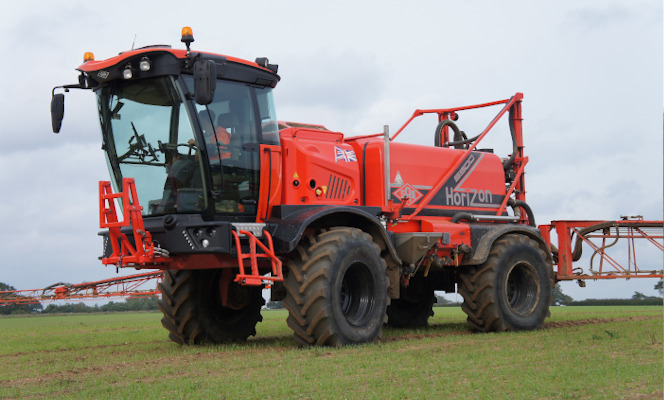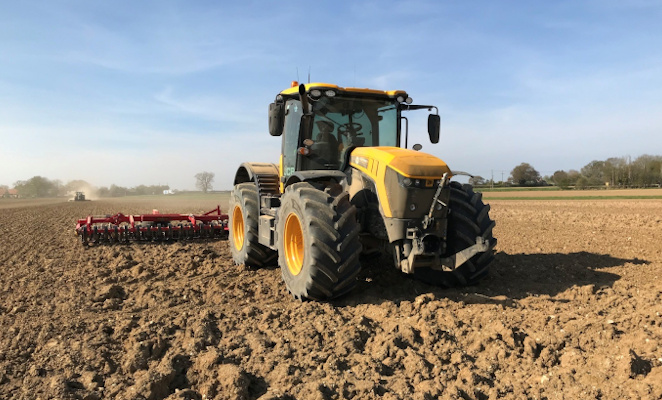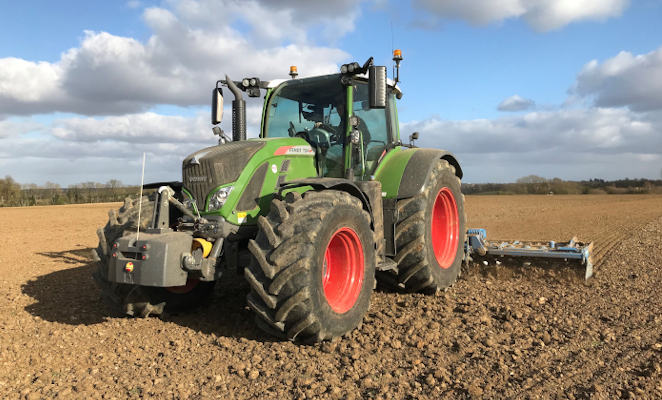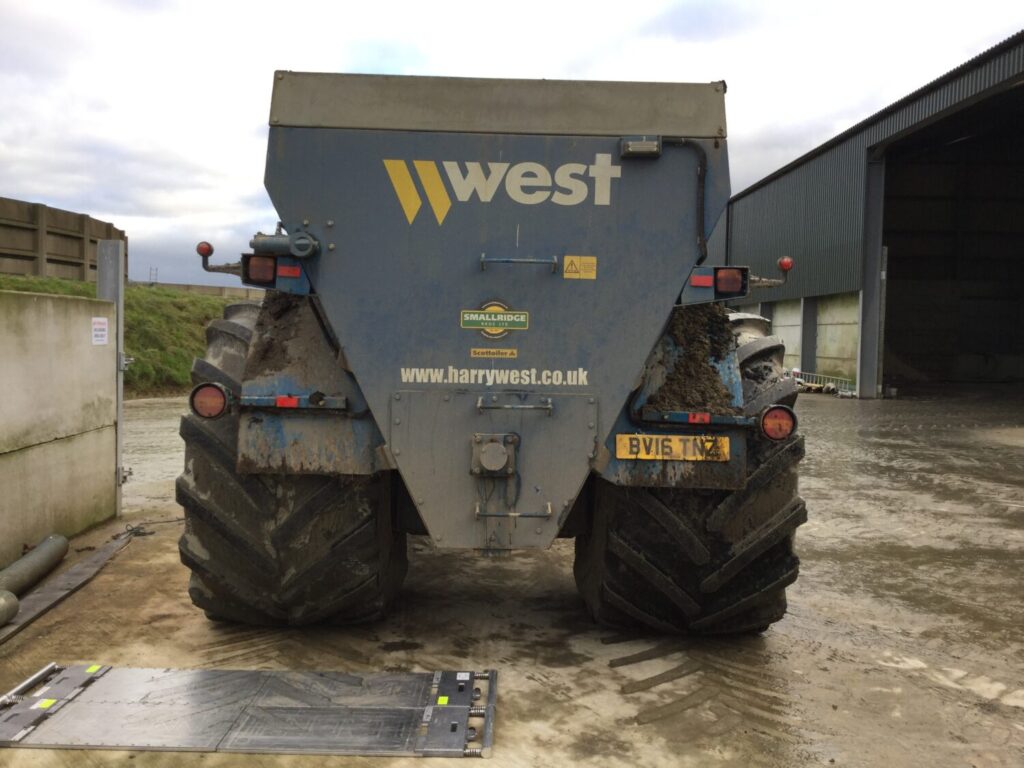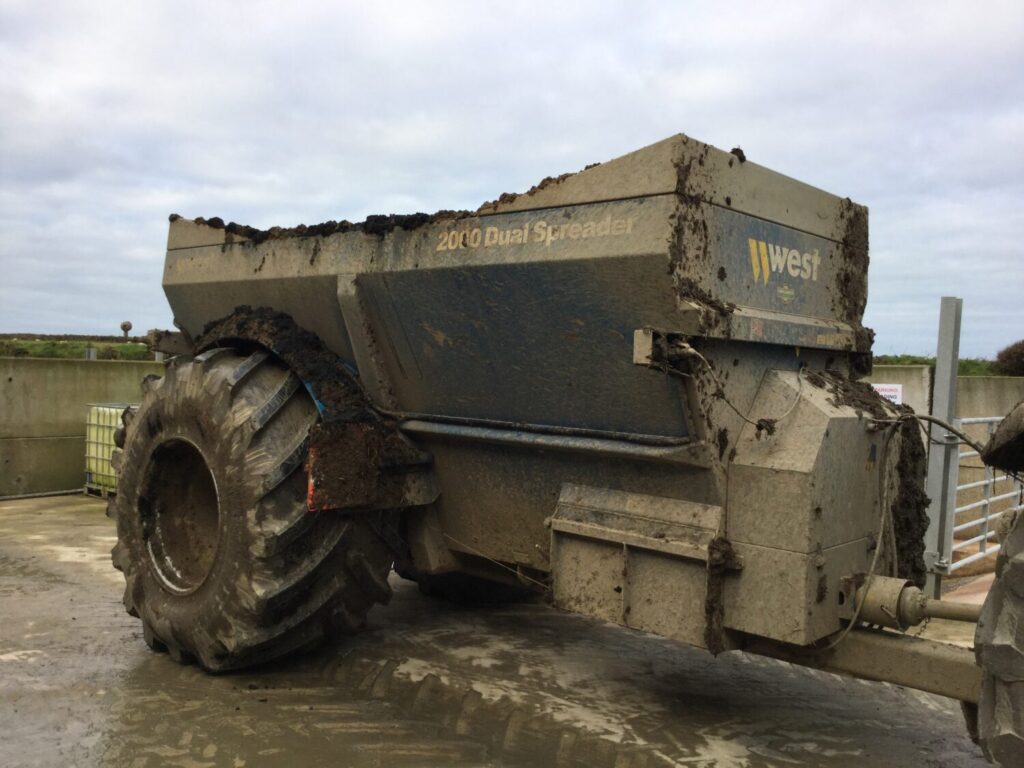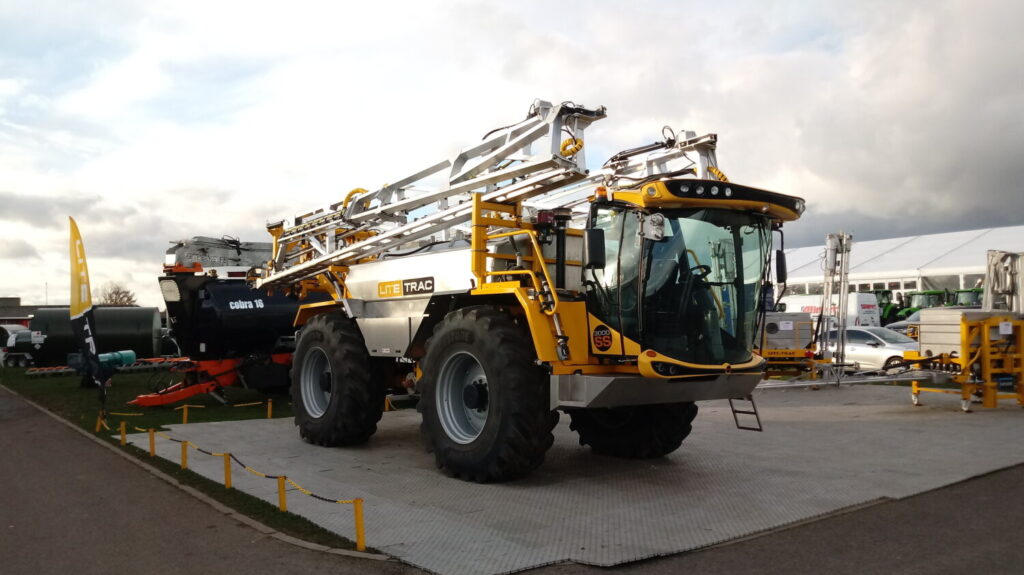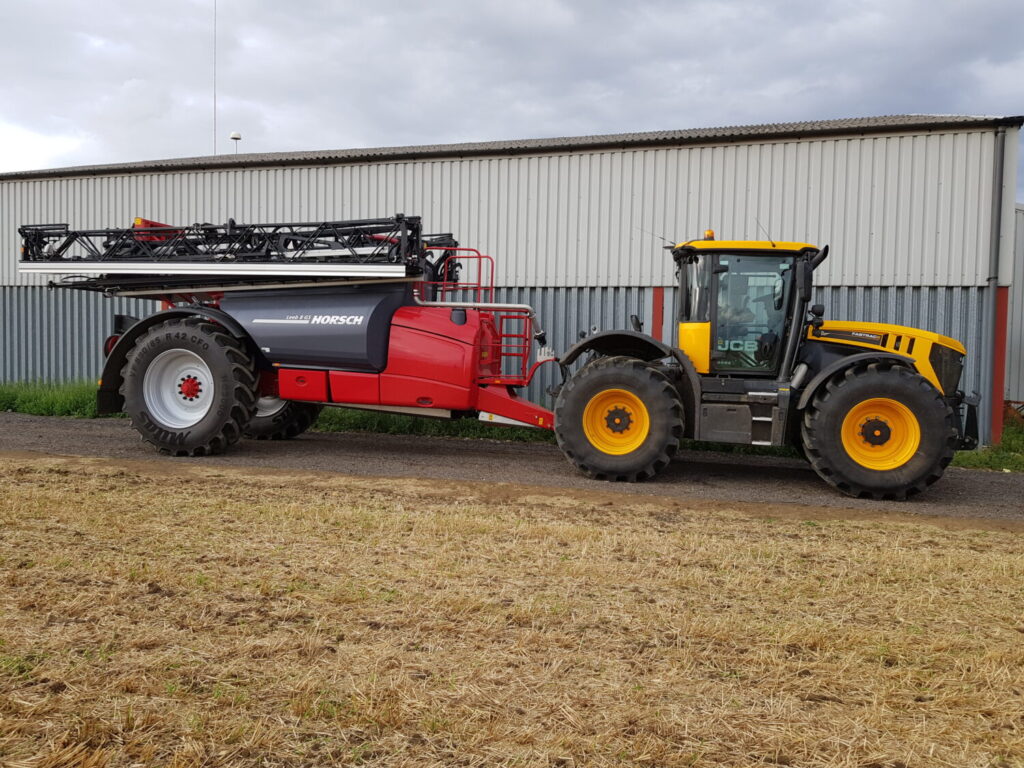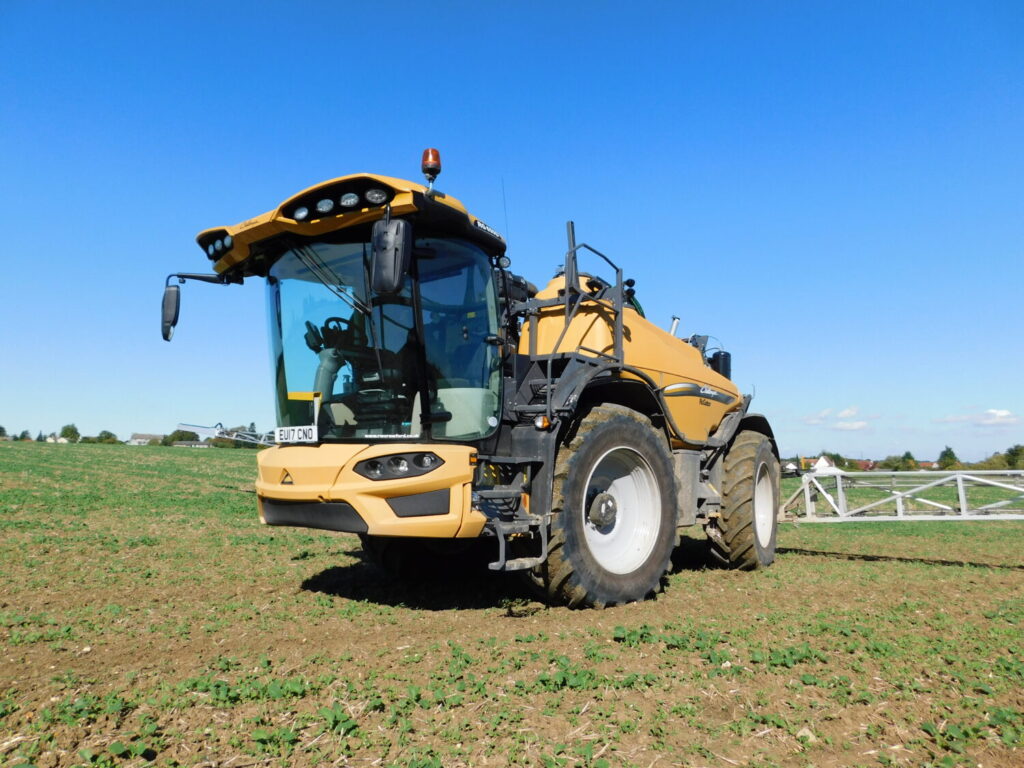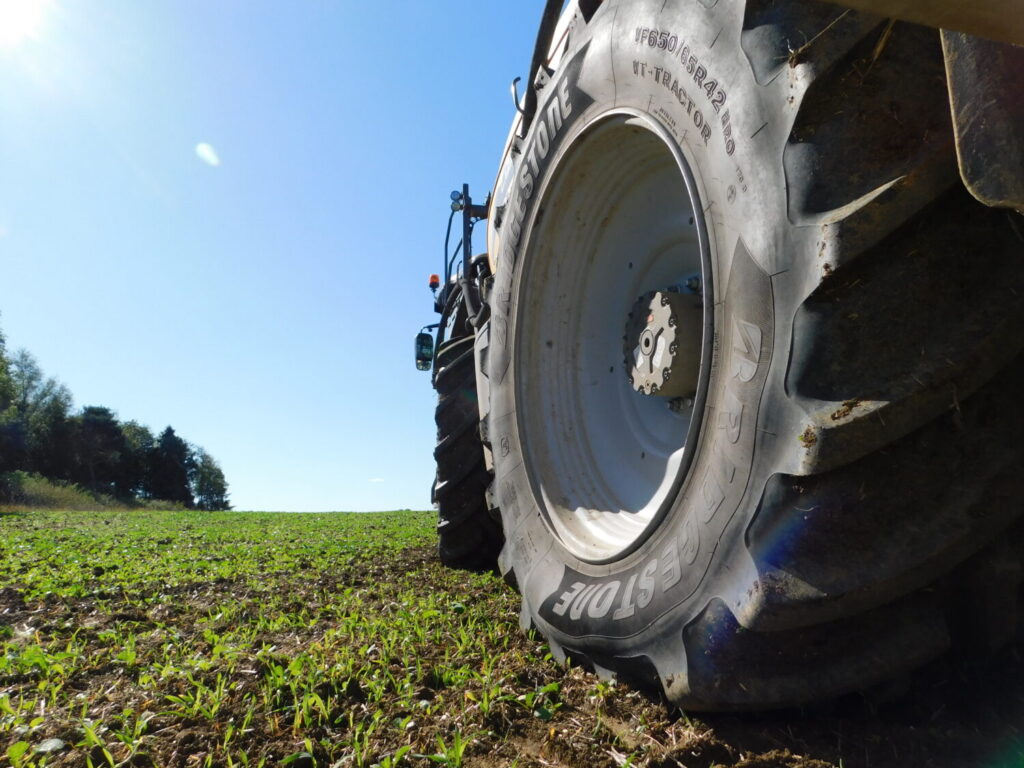Bridgestone VF Tyres
There are two ranges of Bridgestone VF tyres:
- VF-Tractor – a large range of VF tyres for tractors and sprayers.
- VF-Combine – a range of VF combine tyres.
History of the Bridgestone VF range
In 2014 Bridgestone introduced the VT-Tractor tyre range. The idea was to produce VF tyres in common sizes, which fit normal sized rims. This meant farmers could replace existing tyres with a VF equivalent or buy VF tyres on rims and fit standard tyres on the same rims later on. The benefit of this is they weren’t stuck buying the more-expensive VF replacement tyres, even if the tractor was downgraded.
It was a major success.
John Deere quickly offered Bridgestone tyres on their tractors and for the first year or so, demand was so high that the tyres were very hard to get hold of. The tyre market was finally seeing a shakeup – one as important as the change from cross-ply to radial tyre technology.
This VF tyre technology and the importance of low tyre pressures was here to stay.
2014-Today
Since the launch of the VT-Tractor Bridgestone have significantly increased the number of VF tyres they offer. The VF-Tractor range is the most comprehensive range of VF tyres available with VF tyres in all the most common tractor and sprayer tyre sizes.
The VF-Combine range is much smaller, but contains all the common combine tyre sizes.
The Benefits of Bridgestone VF tyres (VT-Tractor range)
Bridgestone summarises their VT-Tractor range with the sentence: Larger footprint for higher yield.
Low soil compaction
The Bridgestone VT-Tractor tyres are VF tyres – this means they can run at 40% lower pressure than a standard tyre (while still carrying the same weight). Alternatively, they can carry 40% more weight while running at the same pressure as a standard tyre.
All VF tyres have a special bead profile design which allows more flex at low pressure – Bridgestone calls theirs the S-Line bead profile. By redesigning the bead and allowing more flex in the sidewall, Bridgestone have allowed the tyre to safely run at lower tyre pressure. This increases the footprint size.
A lower pressure and larger footprint mean less soil compaction.
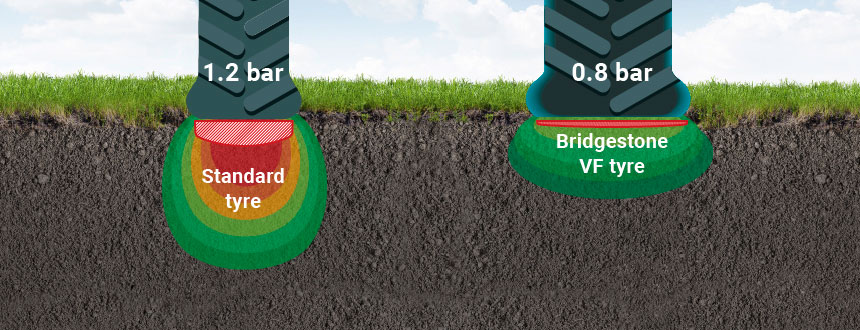
There are numerous benefits to lower soil compaction (which we cover in detail in our ultimate guide to VF Tyres)
Less soil compaction results in increased yields – a 2014/2016 study by Harper Adams University found that farmers solely using VF low pressure tyres could increase their total yields by up to 4%.
Once the initial cost of the VF tyres is paid off, the extra yield gained is extra profit – it goes straight onto the bottom line.
Less soil compaction also reduces fuel use (saving you money), but more on that later.
Superior traction
Increasing traction by reducing pressure is a contentious point. This is because by reducing the tyre pressure you reduce the weight on the soil and this arguably reduces traction.
However, a Bridgestone study (Bernburg, March 2014) tested IF 600/70R30 & IF 710/70R42 in two different makes of tyre against the VF 600/70R30 & VF 710/70R42 Bridgestone. Bridgestone found that the VF tyres could cover on average 0.55ha more in a day with the same equipment (+0.9ha compared to one competing brand & +0.2ha compared to a different competing brand)

At the expense of soil compaction – VF tyres also allow you to increase the weight on the axle to increase ballast for better traction.
Bridgestone claims special lug design, they call it the involute lug design, which they say minimises slip and soil disturbance. This should lead to increased traction.

Lower operating costs
There are three ways the Bridgestone VT-Tractor tyres can reduce your operating costs:
1- Lower fuel consumption from increased traction
A Bridgestone test comparing a VF tyre to an IF tyre found that, thanks to the increased traction, they achieved fuel savings of up to 36 litres per 50ha (123 acres) of heavy draft work.

2- Lower fuel consumption from less soil compaction
VF tyres can run at lower pressure. This reduces soil compaction and therefore removes the need for remedial cultivation.
Compacted soil requires much more horsepower (and fuel) to cultivate, as does increasing the depth of your cultivation. Doubling the depth of your cultivation quadruples the energy required. One study showed that subsoiling after a low-pressure pass of a combine required up to 63% less force to pull.
Less force to pull requires less traction which means less ballast is needed. In rough figures, removing 1ton of unnecessary ballast results in a saving of 1 litre of fuel per hour of use.
3- Less fuel used from increased load carrying capacity
Finally, VF tyres can carry 40% more load than a standard tyre – this could mean less transport cycles on the road (resulting in lower fuel costs).

Other benefits
VF tyres can run at the same pressure in the field and on the road. While a lot of people don’t do it, standard tyres should be run at lower pressure in the field and higher pressure for road use. Some farmers and contractors will stop to change tyre pressures before entering and leaving the field. This takes time. Time that can be saved with VF tyres as they can run at the same pressure in the field and on the road.
Additionally, VF tyres can carry 40% more load than a standard tyre – this could mean you can do 40% fewer loads as you can safely increase your load weight.

Bridgestone also claims that the VT-Tractor tyres increase ride comfort with their flexible sidewall and long, overlapping lugs.

Pictures of Bridgestone VF tyres
Below are pictures of a small selection of the Bridgestone VF sets we have supplied over the last few years.

New Holland T7 on VF 900/50R42 & VF 710/55R30 Bridgestone VT-Tractor tyres 
Sands Sprayer on VF 600/70R28 Bridgestone tyres 
JCB 4220 on VF 710/60R30 Bridgestone VT-Tractor tyres and rims 
Fendt 724 on VF 900/50R42 & VF 710/55R30 Bridgestone VT-Tractor tyres 
Spreader on wide VF Bridgestone tyres 
Spreader on wide VF Bridgestone tyres 
A Lite-Trac sprayer on VF Bridgestone tyres at the Lamma show 
Househam sprayer on VF Bridgestone tyres 
JCB Fastrac 4220 on VF Bridgestone tyres 
Challenger Rogator on VF 650/65R42 Bridgestone VT-Tractor tyres 
Challenger Rogator on VF 650/65R42 Bridgestone VT-Tractor tyres


